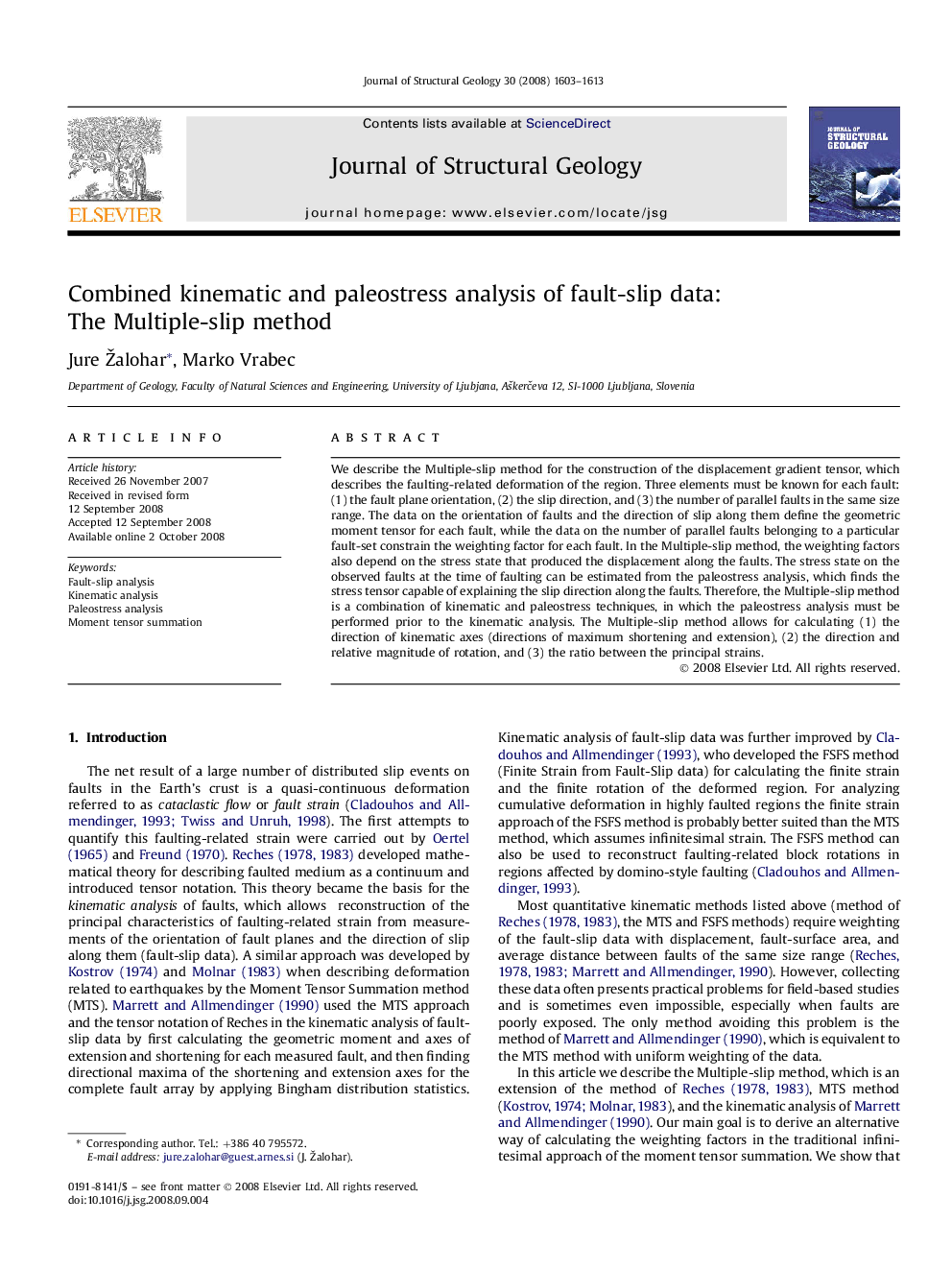| Article ID | Journal | Published Year | Pages | File Type |
|---|---|---|---|---|
| 4733897 | Journal of Structural Geology | 2008 | 11 Pages |
We describe the Multiple-slip method for the construction of the displacement gradient tensor, which describes the faulting-related deformation of the region. Three elements must be known for each fault: (1) the fault plane orientation, (2) the slip direction, and (3) the number of parallel faults in the same size range. The data on the orientation of faults and the direction of slip along them define the geometric moment tensor for each fault, while the data on the number of parallel faults belonging to a particular fault-set constrain the weighting factor for each fault. In the Multiple-slip method, the weighting factors also depend on the stress state that produced the displacement along the faults. The stress state on the observed faults at the time of faulting can be estimated from the paleostress analysis, which finds the stress tensor capable of explaining the slip direction along the faults. Therefore, the Multiple-slip method is a combination of kinematic and paleostress techniques, in which the paleostress analysis must be performed prior to the kinematic analysis. The Multiple-slip method allows for calculating (1) the direction of kinematic axes (directions of maximum shortening and extension), (2) the direction and relative magnitude of rotation, and (3) the ratio between the principal strains.
